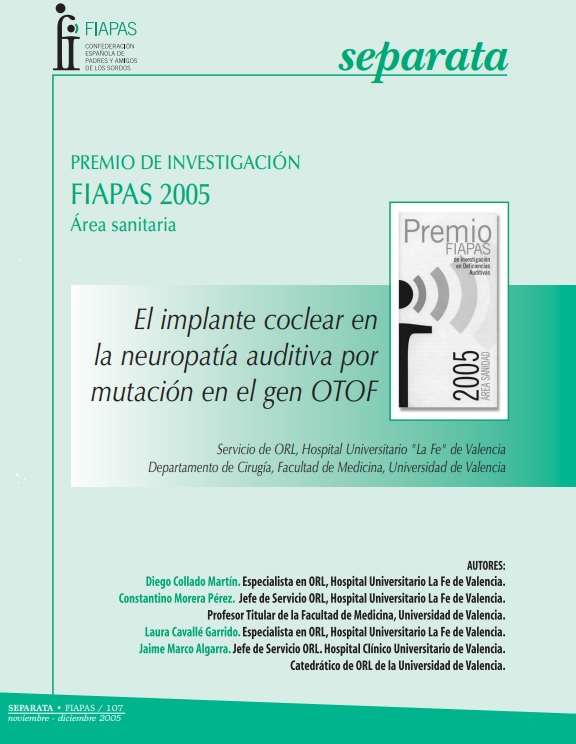Award-winning work
COCHLEAR IMPLANT IN AUDITORY NEUROPATHY DUE TO MUTATION IN THE OTOF GENE
Auditory neuropathy is a newly-described clinical entity. It is a hearing disorder which is associated with a disturbance in the transmission of the electrical signal from the inner ear to the brain and encompasses a variety of changes in the auditory pathway. The anatomical location of the lesion along the auditory pathway is critical to determining effective treatment.
Patients with auditory neuropathy have hearing loss associated with poor verbal compression. The results of audiological tests to determine the presence of hearing loss are variable: they present absent or distorted evoked brain stem potentials (PEATC), while transient acoustic otoemissions (OEAT) and cochlear microphonics are normal.
The etiology that justifies auditory neuropathy includes certain genetically-determined diseases such as the Q829X mutation in the OTOF gene that codes for the synthesis of otoferline, a protein involved in the synapse of sensory cells in the inner ear (specifically the internal ciliated cells of the organ of Corti).
In 2002, Miglosi et al. reported this mutation as the third most common cause of prelingual genetic deafness in Spain.
Neuropathies by mutation in the OTOF gene are responsible for approximately 3.5% of autosomal recessive bilateral deep sensorineural hearing loss. In more than 90% of patients, the disease is bilateral and no significant differences are seen between women and men.
Cochlear implants are known to be an effective treatment for bilateral deep hearing loss of cochlear origin. Their effectiveness has been demonstrated through the experience of the different implanting centres. However, the results of cochlear implants in neuropathies are highly variable, which is attributed to difficulties in the topographic diagnosis of the lesion.
By determining whether auditory neuropathy is caused by mutation of the OTOF gene and, since the protein (otoferline) that this gene encodes is involved in the synapses of the internal ciliated cells, it would be possible to locate the lesion in the auditory pathway and anticipate cochlear implant treatment, were this the case.
The purpose of this study is to analyse the incidence of OTOF gene-related auditory neuropathy and to study the results of cochlear implants in a sample on which work has been performed.
Reference: Collado et al. (2005): “Cochlear implant in auditory neuropathy due to mutation in the OTOF gene”. FIAPAS Journal, November-December 2005, No. 107, FIAPAS Supplement.
